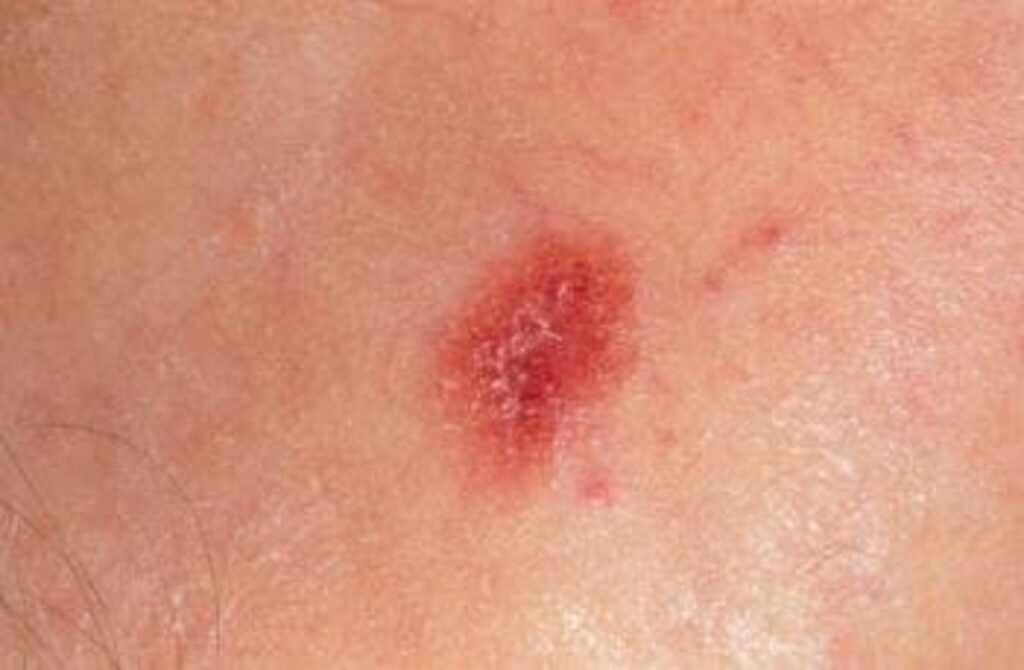What is Amelanotic Melanoma?
Amelanotic melanoma is an aggressive type of skin cancer that doesn’t produce the pigment melanin, which gives most melanomas their dark appearance. As a result, they don’t look like other melanomas. Instead, they may appear skin-colored, pink or even reddish, with gray or brownish edges. They may even look just like a patch of abnormal skin, making them very easy to miss when self-checking your skin.
Amelanotic melanomas may be easily confused with basal or squamous cell carcinomas, or misidentified as harmless scars or moles, which is dangerous. It’s because they often spread faster than the more easy-to-recognize melanomas.
What causes Amelanotic Melanoma?
The causes of amelanotic melanomas are the same as their more recognizable counterparts. Most often, genetic changes to the cells in moles cause them to turn into cancerous cells, or melanoma.
All of your cells contain DNA, a chemical that controls how your genes work. When DNA mutations cause your genes to function abnormally, cells may grow uncontrolled, becoming cancerous. The most common cause of these cellular changes is exposure to ultraviolet (UV) rays from the sun or a tanning bed. Although it may take years after UV exposure for these mutations to occur.
Rare, inherited genetic mutations may also play a role in causing melanoma. Inherited melanomas are caused by changes to tumor suppressor genes, impairing their ability to control cellular growth and ultimately contributing to cancer. People with a condition called xeroderma pigmentosum (XP) have an inherited mutation in the genes that repair damaged cellular DNA after UV exposure. These genes don’t work properly in those with XP, making them more susceptible to melanoma.
How fast does amelanotic melanoma grow?
Amelanotic melanoma may grow quickly, with lesions developing within months or even weeks. This is important to know because melanomas are more easily treated when detected early.
Amelanotic Melanoma risk factors
Though these risk factors don’t mean someone will develop melanoma, they are linked with increased risk of all forms of the cancer, including amelanotic melanoma.
Exposure to UV rays. Damage to DNA in your skin cells, from exposure to UV rays (both UVA and UVB), is the No. 1 risk factor for all types of melanoma. Both natural sunlight and artificial tanning lamps increase the risk of developing this type of skin cancer.
Moles. If you have a lot of moles or have atypical moles, you’re at greater risk of developing melanoma. Additionally, patients with the inherited condition dysplastic nevus syndrome are at a high risk of developing melanoma during their lifetime.
Fair skin. People who have light-colored, freckled skin and blond or red hair with blue or green eyes are at a greater risk of developing melanoma. This is especially true if your skin tends to burn as opposed to tanning when exposed to UV rays.
Race. Melanoma is 20 times more likely for white people than it is for black people, according to the American Society of Clinical Oncology (ASCO).
Family and personal history. If your close relatives have a history of melanoma, you’re at increased risk. If you’ve previously had melanoma or another type of skin cancer, the chance of developing it again is also greater.
Weakened immune system. People who take immunosuppressive drugs or have weakened immune systems from illnesses such as human immunodeficiency virus (HIV) are at greater risk of melanoma.
Age and gender. Melanoma risk increases with age, though it’s one of the more frequently diagnosed cancers in people younger than 30. Men are at greater risk of developing melanoma after age 50, while women are at greater risk before age 50.
Are you suffering from this condition or other foot problems? At The Chelsea Clinic, we can help. One of our podiatrist can assist and then recommend what treatments are best to get you back on track. 
Schedule an appointment here or you may call us at 44 (0) 207 101 4000. 
We hope you have a feetastic day! 

-The Chelsea Clinic and Team








